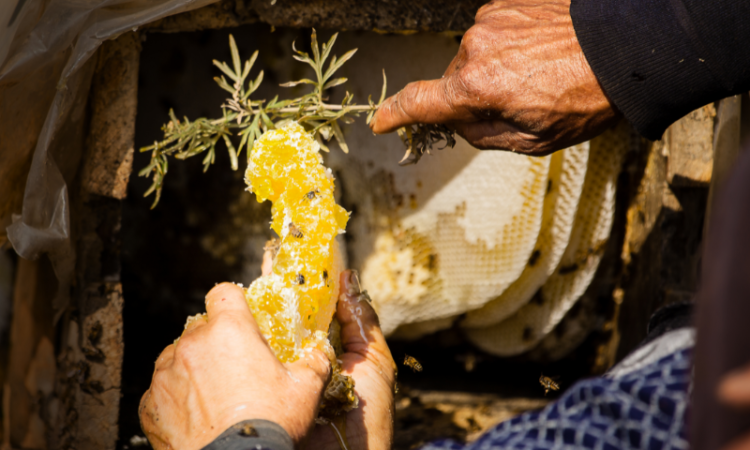
Mad honey, also known as deli bal in Turkish, is a rare and prized honey variety celebrated for its unique properties derived from the nectar of specific rhododendron flowers. This article delves into the intricate process of harvesting and processing mad honey rhododendron, shedding light on its origins, production methods, and considerations for ensuring its authenticity and quality.
Mad Honey and Rhododendron
Mad honey is sourced primarily from the nectar of rhododendron flowers, particularly Rhododendron luteum and Rhododendron ponticum. These plants contain grayanotoxins, notably grayanotoxin I and grayanotoxin II, which give mad honey its distinct characteristics and potential psychoactive effects when consumed in significant quantities. The presence of these toxins varies depending on the species of rhododendron and the geographical location where the honey is harvested.
Harvesting Mad Honey: A Challenging Endeavour
The harvesting of mad honey is a specialised and labour-intensive process that requires expertise and caution. Beekeepers in regions such as Nepal and Turkey venture into mountainous areas where rhododendron forests thrive. These beekeepers, often known as honey hunters, carefully select hives strategically placed near rhododendron blooms during the nectar flow season. Timing is crucial, as the concentration of grayanotoxins in the nectar peaks when the flowers are in full bloom.
Processing Techniques: From Hive to Table
Once harvested, mad honey undergoes meticulous processing to ensure its quality and safety. The honeycombs containing mad honey are carefully transported from remote mountain locations to processing facilities. Here, the honeycombs are extracted and the raw honey is filtered to remove debris and excess beeswax. Unlike conventional honey, mad honey may retain a darker hue and a slightly bitter taste due to its unique floral source and the presence of grayanotoxins.
Quality Control and Authentication
Ensuring the authenticity of mad honey is paramount to its reputation and safety. Beekeepers and honey processors adhere to strict quality control measures to verify the honey’s origin and purity. This includes conducting chemical analyses to measure the levels of grayanotoxins and other compounds present in the honey. Authentic mad honey is often certified and labelled to indicate compliance with local regulations and consumer safety standards, providing reassurance to buyers about its quality and authenticity.
Cultural Significance and Global Demand
Real mad honey holds cultural significance in regions where it is traditionally harvested, often valued for its medicinal and culinary uses. In Nepal, for example, mad honey has been used for centuries in traditional medicine to treat various ailments, including gastrointestinal disorders and hypertension. Globally, its reputation as a rare delicacy and its purported health benefits have contributed to its demand among enthusiasts and connoisseurs seeking unique culinary experiences.
Ensuring the Quality and Authenticity of Mad Honey
Ensuring the quality and authenticity of mad honey involves rigorous checks and measures throughout the harvesting and processing stages. From selecting the right rhododendron species to monitoring the extraction process, maintaining quality standards is crucial. This section explores how producers and consumers can verify the authenticity of mad honey, ensuring it meets safety guidelines and retains its unique properties.
Conclusion
Harvesting and processing mad honey involves navigating rugged landscapes, understanding the botanical intricacies of rhododendron flowers, and adhering to rigorous quality standards. From the remote mountains of Nepal to the coastal regions of Turkey, the journey of mad honey from hive to table is a testament to human ingenuity and reverence for nature’s offerings. By preserving its authenticity and ensuring responsible harvesting practices, we uphold the legacy of mad honey as a cherished delicacy and cultural artefact in the global marketplace.
Mad honey continues to intrigue and captivate with its rich history, unique flavour profile, and potential health benefits, making it a sought-after commodity among those who appreciate its natural complexity and cultural significance. As consumer interest grows, so does the need for sustainable practices and ethical considerations to preserve the biodiversity and integrity of rhododendron ecosystems for future generations.
Contact Maddest Mad Honey today for more information.

